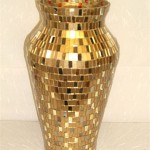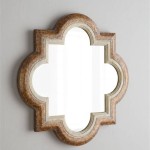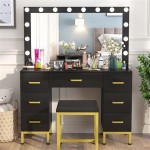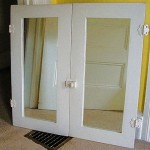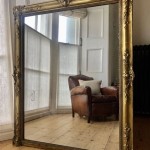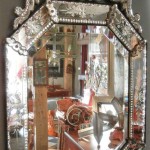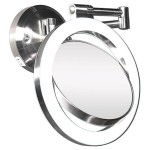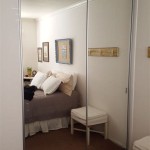Glue to Fix Car Wing Mirror
A detached or damaged car wing mirror can be a significant safety hazard, obstructing the driver's view and increasing the risk of accidents. While replacement is often the recommended solution, adhesive bonding offers a viable alternative for certain types of damage. Choosing the correct adhesive and employing proper application techniques are crucial for a successful and lasting repair.
Types of Adhesives
Several types of adhesives are suitable for repairing car wing mirrors. Selecting the appropriate adhesive depends on the materials involved (plastic, glass, metal) and the extent of the damage. Common choices include:
Cyanoacrylate Adhesive (Super Glue): This fast-acting adhesive is ideal for small cracks and reattaching small broken pieces. Its quick setting time is advantageous, but its brittle nature makes it less suitable for larger repairs or areas subject to significant vibration.
Epoxy Adhesive: Epoxy provides a strong and durable bond and is often preferred for structural repairs. It comes in two parts – resin and hardener – that are mixed before application. Epoxy adhesives offer greater gap-filling capabilities compared to cyanoacrylate, making them suitable for slightly larger breaks or gaps.
Polyurethane Adhesive: Polyurethane adhesives offer excellent flexibility and resistance to vibration, making them well-suited for bonding dissimilar materials and areas prone to movement. This flexibility helps prevent the bond from cracking under stress. They generally have a longer curing time than cyanoacrylate or epoxy.
Automotive Mirror Adhesive: Specifically formulated for automotive applications, these adhesives are designed to bond to various mirror and housing materials. They often offer features like weather resistance and UV stability for long-lasting repairs in harsh environments.
Preparing the Surfaces
Proper surface preparation is critical for achieving a strong and lasting bond. Cleanliness is paramount, as dirt, grease, and old adhesive will interfere with adhesion. Thoroughly clean both surfaces with isopropyl alcohol or a dedicated adhesive remover. Roughening the surfaces with sandpaper can enhance adhesion, particularly on smooth plastics.
Applying the Adhesive
Follow the manufacturer's instructions regarding adhesive application. Using too much adhesive can create a messy repair and may weaken the bond. Apply the adhesive to one of the surfaces, ensuring even coverage. Carefully align the pieces and apply firm, even pressure for the duration specified by the manufacturer. Clamping the pieces together during curing can help ensure optimal contact and a stronger bond.
Curing Time
Allowing adequate curing time is essential for the adhesive to reach its full strength. Curing times vary depending on the type of adhesive and ambient temperature. Consult the manufacturer's instructions for specific curing times. Avoid using or disturbing the repaired mirror until the adhesive has fully cured.
Safety Precautions
Working with adhesives requires following necessary safety precautions. Wear appropriate gloves to protect skin from contact with the adhesive. Work in a well-ventilated area to avoid inhaling fumes. Some adhesives may be flammable, so keep them away from heat sources and open flames.
Factors Affecting Adhesive Performance
Temperature plays a significant role in adhesive performance. Extreme temperatures, both hot and cold, can affect the adhesive's ability to bond and cure properly. Humidity can also impact certain adhesives, particularly cyanoacrylate. Consider environmental conditions when choosing an adhesive and performing the repair. Additionally, the type of plastic used in the mirror and housing can influence adhesive compatibility. Some plastics are more challenging to bond than others.
Alternative Repair Methods
While adhesive bonding is a viable solution for many wing mirror repairs, some damage may require alternative methods. Severely damaged mirrors, particularly those with shattered glass or extensive cracks in the housing, are best replaced. In situations where the mounting points are broken, professional repair or replacement is usually recommended.
Understanding the different types of adhesives, proper application techniques, and surface preparation is crucial for a successful car wing mirror repair. Careful consideration of these factors will contribute to a durable and lasting bond, restoring the mirror's functionality and ensuring driver safety.

Car Mirror Glue Replace Your Side With The Right

Best Glue For Car Side Mirror Top 5 Glues Of 2024

Top 5 Best Glue For Car Side Mirror 2024

Car Mirror Glue What You Need To Know

Will Gorilla Glue Work On A Side Mirror Turborevs

Best Adhesive For Car Side Mirror Turborevs
How To Repair A Car Side Mirror With Adhesive Bonding Cover

Best Glue For Car Side Mirror Reviews Top 6 Picks

How Do You Temporarily Fix A Broken Wing Mirror Turborevs

Top 5 Best Glue For Car Side Mirror 2024

